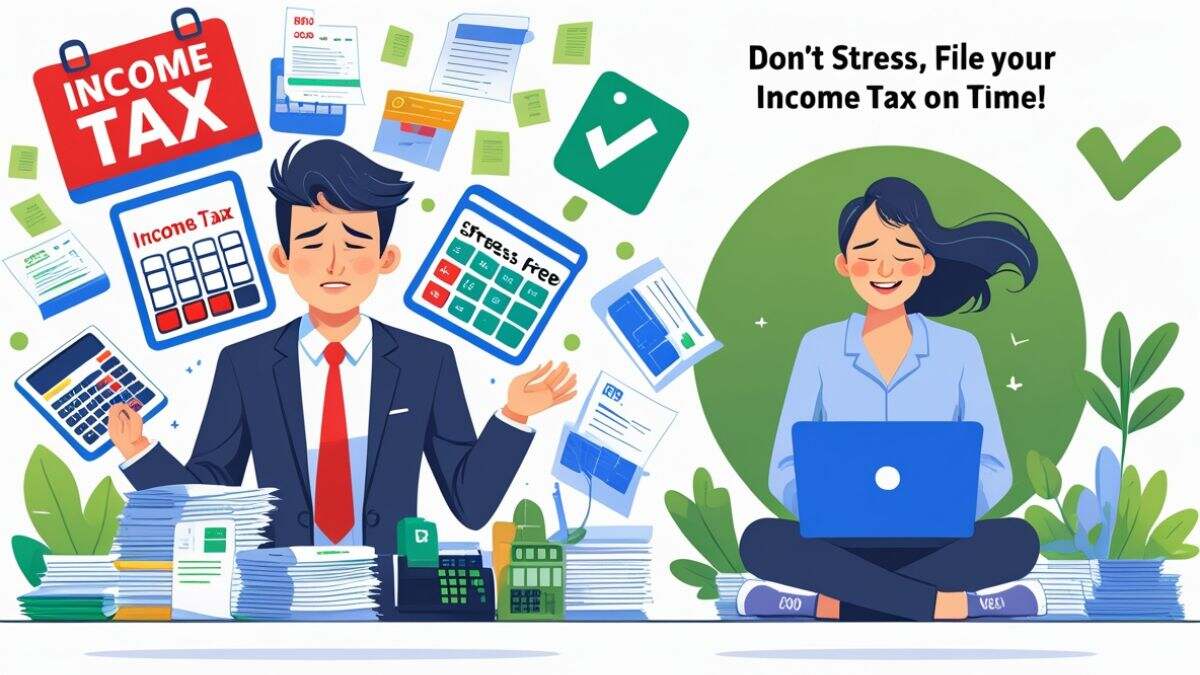Notices from the Income Tax Department are common and should not raise any red flags. The key to hassle-free compliance is knowing the causes and taking action.
Any taxpayer, whether they are self-employed, salaried, or retired, may get notices from the Income Tax Department. Notices might be sent for a variety of reasons, such as a discrepancy in your return, underreporting of income, tax arrears, or just a simple need for clarification. While there are some alerts that are routine, others call for quick response. The goal is to understand the kind of notification, the reason for its issuance, and respond within the allotted time.
Notification according to Section 143(1)
This is the most common way that taxpayers communicate. The department checks your information in their records after processing your return. One of the following three statements will appear in the notification: your return has been received as submitted, you are owed a refund, or there is an additional tax demand. Verify again whether there are any noticed adjustments. If accurate, make the payment right away; if not, fill out an online application for correction.
Inaccurate return notification in accordance with Section 139(9)
If your submitted return is incomplete or flawed, you will get a faulty return notification. This occurs when you fail to annex required information, use the wrong ITR form, or leave needed fields empty. The department has given you 15 days to fix the error and submit a new application. If you do not follow the suggested timeframe, your return may be considered invalid, which might result in fees and a loss of your refund.
Examination notice according to Section 143(2)
When your return is subject to close examination, it is known as a “scrutiny notice.” It may be the result of disparities, dubious assertions, or haphazard examination. You could be required to provide supporting documentation, such as books of accounts, bank statements, or proof of investments. It is preferable to react quickly and, if required, seek advice from a tax professional since scrutiny may become a major issue if left unchecked.
Demand notification under Section 156
The government will send you a demand notice if they discover that you are behind on taxes, interest, or penalties. The message will include the precise amount and due date. If a demand is legitimate, make the payment right away using the e-filing system. You have 30 days to file an appeal if you are not in compliance. Recovery actions, such as the seizure of assets or bank accounts, may result from failure to pay a demand notice on time.
How to properly respond to notifications
It is important to avoid panic. Each notice shall explicitly identify the Income Tax Act provision under which it was issued as well as its intended use. To identify discrepancies, compare the data with your filed ITR and Form 26AS (or AIS). Within the allotted period, respond promptly—probably via the online portal—so that the department is in charge of your compliance. It would be beneficial and protective to maintain accurate accounting records and seek the advice of a professional accountant when necessary.
Frequently Asked Questions
Does the seriousness of income tax notifications have to remain constant?
No, some of them are only regular intimations, such as those under Section 143(1). Only certain notifications, such as demand or scrutiny notices, need for thorough documentation and answers.
What happens if I do not reply to a notification?
Penalties, tax notifications, and even legal action may result from failure to comply with notices. Even if you disagree, you will still be required to respond within the allotted time.
Does processing notices need professional help?
The e-filing platform allows for the processing of regular notifications, such as intimations under Section 143(1), separately. To prevent mistakes, professional help is advised in the case of inspection or demand notifications.

